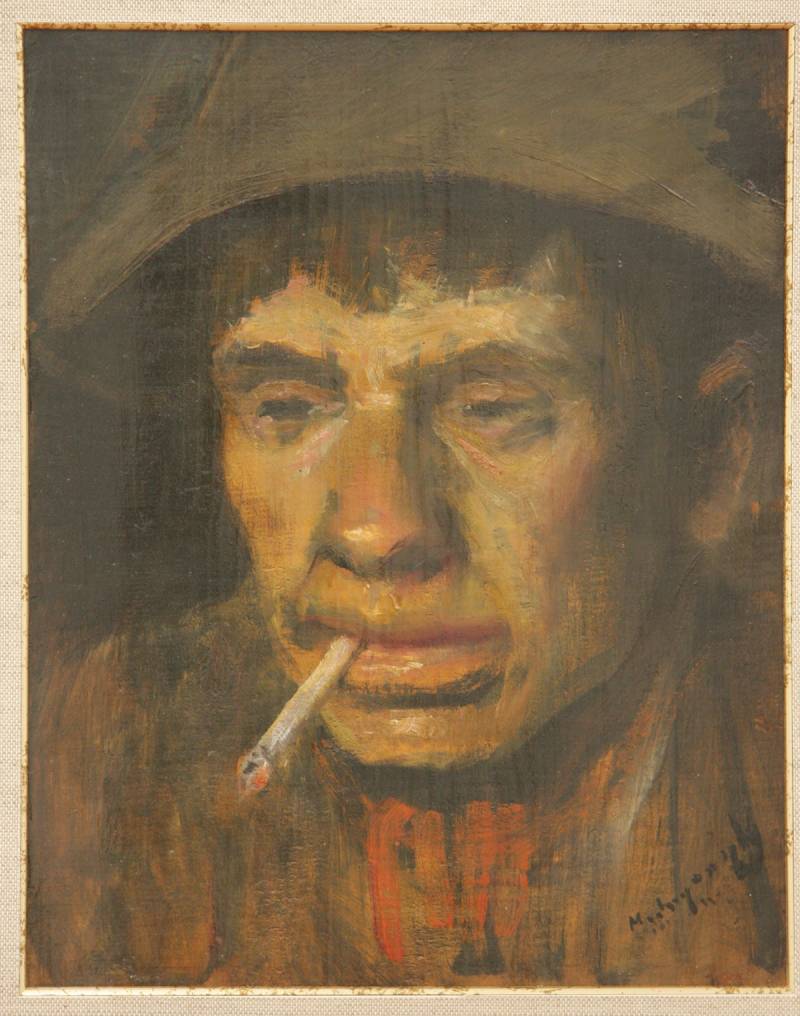MODEM opened a new exhibition on February 18 entitled Close to the Soil that showcases works from Hungary’s biggest private art collection, the Antal–Lusztig Collection.
Exhibited here, in 2023, is a selection from the works in the fourth volume forming part of the book- and exhibition-series devoted to the largest private collection in Hungary. The central motif of the exhibition is the Great Hungarian Plain. The special features and characteristics of this landscape were first observed by the painters of Romanticism, who wished to present something uniquely Hungarian – something that other countries and peoples did not have – both for themselves and for the world at large.

In the 20th century among the first to profess the plain as his own was Tornyai, who was born in Hódmezővásárhely, a town in the Great Plain region, and painted it the most; the greatest number of landscapes inspired by the Great Plain in the Antal-Lusztig Collection are from his brush. Tornyai became interested in the theme of the Great Plain’s expansive landscape in the 1910s. He tirelessly produced wonderfully fresh and diverse oil sketches, mostly on small pieces of cardboard and wooden plates. His pictures follow the everyday life of the Great Plain virtually minute by minute, showing the various parts of the day, the seasons and situations, while depicting different slices of the lyrical landscape over and over, sometimes with people and animals and sometimes without them. Tornyai recorded his visual experiences quickly, which explains the vividness of his compositions and the emotional intensity of the moments he captured. Besides Tornyai, it was the art of József Koszta and Béla Endre that was most integrally linked to the painting of the Great Hungarian Plain.

The other artist of the Antal-Lusztig Collection who is represented in the fourth volume and exhibition with many works and significant pieces is István Nagy. The oeuvre of the Transylvanian-born painter is mainly dominated by landscapes and depictions of people, the latter of which include portraits of soldiers recording his experiences during World War I. Nagy went to the front in 1915, at the age of 42, as a drafted soldier, and not as a war correspondent: his regiment was first dispatched to Italy and then to Transylvania, and he served in Galicia in 1917. In 1914 the then 61-year-old László Mednyánszky, his senior by many years, was only given permission to be a member of the press corps thanks to his ’connections’ as, deemed too old, he was not eligible to be sent to the front. While none of the pictures in the ensemble of war-themed works by Mednyánszky and Nagy in the Antal-Lusztig Collection depict the horrors of the war directly, they paint a dramatic picture of the events that took place on the front.
Besides the painters, the exhibition also includes a great sculptor of the period, Ferenc Medgyessy, whose works nicely fit in with the spirit represented by the other artists featured here. The ’youngest’ artist of the show, László Holló, one of the best painters in Debrecen, played an important role not only in the town’s fine art scene but was also a defining figure in the art collecting of Péter Antal, who, still an adolescent in the late 1960s, visited the then more than eighty year-old painter upon the advice of his grandfather, Sámuel Lusztig (1899–1978). Holló warmly welcomed the keen young man, who, from then on, paid regular visits to the elderly master. It was in Holló’s company that Péter Antal first felt the magical, alchemistic air and milieu of a studio, and their many conversations further excited his interest and dedication to art.

Works by László Mednyánszky, József Koszta, Adolf Fényes, Iványi Grünwald, János Tornyai, Béla Endre, Oszkár Glatz, István Béla Nagy, Gyula Rudnay, Ferenc Medgyessy and László Holló in the Antal–Lusztig Collection.
Curator:
Nagy T. Katalin
The exhibition can be seen from February 18 to April 3, 2023 at MODEM Center for Modern and Contemporary Art.